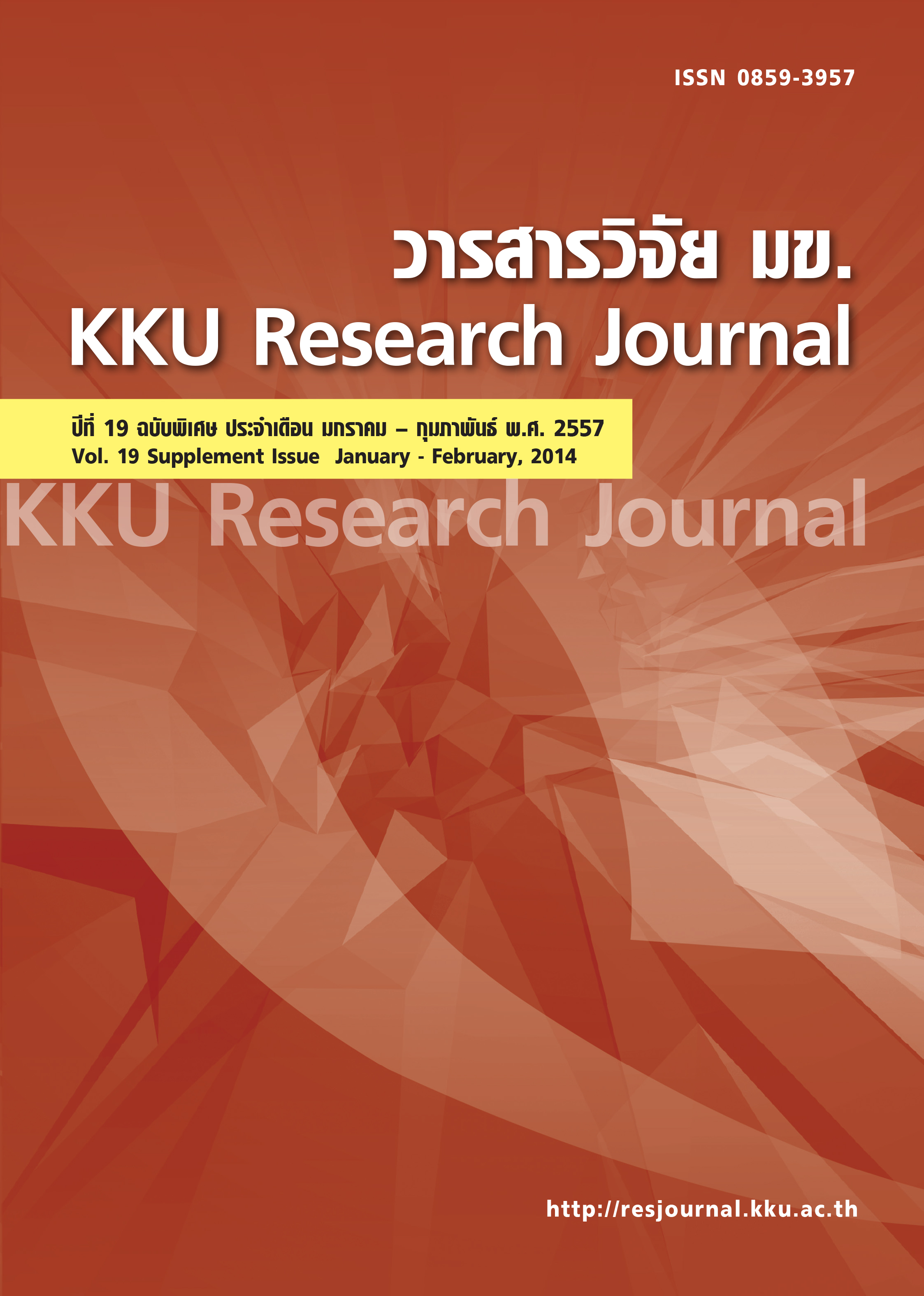Variant detection of variable number tandem repeat loci of listeria innocua by high resolution DNA melting analysis
Main Article Content
Abstract
Microbial contamination caused by Listeria organism becomes a major problem in chilled and frozen food processing plants. Listeria innocua is the most frequently found species in finished products and plant facilities such as equipments and plant environments. High Resolution DNA Melting Analysis (HRMA) is a highly potential method for variant detection of Tandem Repeat (TR) loci of L. innocua which can be applied for tracking sources of L. innocua contamination in food processing plants. Variant scanning by HRMA is an effective method for revealing the differences of selected TR loci of L. innocua. Five TR loci of L. innocua were identified and characterized by Unipro UGENE program. All primers were designed and analyzed using Primer3 program. Ninety-four isolates ofL. innocua from our L. innocua collections were used in this study. All Five TR loci were successfully amplified. The TR ampilcons were scanned for variants by HRMA using Lightcyclerฎ480 system. Only 3 TR loci were found discriminatory in this data set. These ninety-four isolates of L. innocua could be subtyped by HRMA giving Hunter and Gaston discrimination indices (D-value) of 0.45. Hence, the High Resolution DNA Melting Analysis (HRMA) could be a highly potential method for variant detection of TR loci ofL. innocua.
Article Details
How to Cite
Thanatsang, K., Phraephaisarn, C., & Keeratipibul, S. (2017). Variant detection of variable number tandem repeat loci of listeria innocua by high resolution DNA melting analysis. Asia-Pacific Journal of Science and Technology, 19, 162–167. retrieved from https://so01.tci-thaijo.org/index.php/APST/article/view/83115
Section
Research Articles


